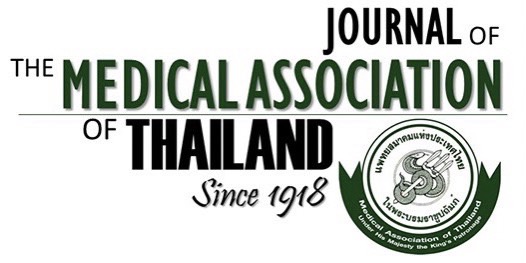Bioequivalence, Antibacterial Activity and Therapeutic Outcome of A Generic Meropenem (Mapenem®®®®®)
Amorn Leelarasamee MD*, Yong Rongrungruang MD*, Suwanna Trakulsomboon PhD*, Pintip Pongpech PhD**, Peeracha Thanawattanawanich MS***, Ponsiree Jithavech MS***
Affiliation : * Department of Medicine, Faculty of Medicine Siriraj Hospital, Mahidol University, Bangkok ** Department of Microbiology, Faculty of Pharmaceutical Sciences, Chulalongkorn University, Bangkok *** Pharma Nueva Co., Ltd., Bangkok, Thailand
Background : The authors aimed to compare the bioequivalence and antibacterial activity of a generic
meropenem with the original meropenem and studied its preliminary therapeutic outcome.
Material and Method: A randomized, open-label, crossover study was employed to assess the bioequivalence
and antibacterial activity. Twenty-six healthy males were recruited at Siriraj Hospital, Thailand and randomized
to firstly receive either a single intravenous 30-minute infusion of a generic (Mapenem®) or original meropenem
(Meronem®) and vice versa for the second period. The washout period was one week. Ten milliliters of blood
samples were collected before meropenem infusion and at 0, 10, 15, 30, 45, 60, 90, 120, 150, 180, 240, 360, 470
and 480 minutes after the beginning of the drug infusion. Blood samples were coded and separated into
plasma and serum samples. Plasma samples were used to determine drug concentrations by HPLC-UV detector
and the data were analyzed for Cmax, AUC0-t and AUC0-inf. Serum samples were assayed in triplicate for
measuring generic and original meropenems’inhibitory activities of a meropenem-susceptible E. coli ATCC
25922 in the same agar plate. An open-label design was used to preliminarily study of the therapeutic
outcome and adverse effects of the generic meropenem in 30 patients.
Results : All enrolled twenty-six volunteers completed the whole study. The statistical analysis of 90%
confidence interval of Cmax, AUC0-t and AUC0-inf of the generic and original meropenems were 87.7 to 101.7%,
96.3 to 102.4% and 96.3 to 102.3%, respectively. The results were within the standard range of bioequivalence
acceptance criteria (80-125%) and the powers of the test were greater than 80%. Using E. coli ATCC 25922
in the blind assay of serum inhibition activity, the inhibitory zone sizes (mm) of the generic compared to
original meropenems were not statistically different with respect to every time points of blood collections
(p < 0.05). Correlation of mean values of serum meropenem levels and the widths of inhibitory zone sizes of
the same samples collected at the same intervals showed good linear relationship with r = 0.891; R2 = 0.794
(p < 0.01) for the generic meropenem and r = 0.885; R2 = 0.784 (p < 0.01) for the original meropenem. The
therapeutic result with the generic meropenem for various indications was successful or improved in 24 cases
from 30 cases (80%) and the bacterial cure rate was 23 in 30 clinical isolates (76.7%). Adverse reactions
probably related to the study medication were rash and elevated liver enzymes in 1 and 3 patients, respectively,
and all resolved spontaneously.
Conclusion : In the present study, the generic meropenem exhibited indifferent bioequivalence and antibacterial
activity compared to the original meropenem. There was also a good correlation between serum levels and
inhibitory zone sizes produced by the same serum samples in every periods of blood collection. Clinical
efficacy of the generic meropenem was shown to be satisfactory without notable severe adverse reaction.
Keywords : Generic meropenem, Serum inhibition assay, Bioequivalence study



